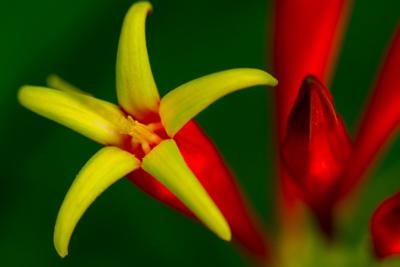Notable Natives: Spigelia marilandica is a Red Perennial to Try in Your Garden
By Su Fiske | Special to the Coastal Point Aug 3, 2023

Red perennials are hard to come by, so when I find one, I find myself purchasing three or more at a time. Spigelia marilandica is one of those. These Indian pinks are a must have for your garden, as they do well in mostly sun, part shade and full shade. They are particularly stunning when planted in mass.
If you have not been to Mt. Cuba, it is worth the trip to see these beauties along the forest edge, in a garden setting and in the meadows. The only thing they are finicky about is wet feet, so do not overwater or put them in poorly draining soil. They do like dry, partially shaded areas, so they will do well in our area.
I am not sure why they are called Indian pink. I have heard that it is because they have pink roots or that they appear to have been through the laundry with a pair of pinking shears. Spigelia marilandica grows 1 to 2 feet, and their tubular flowers are hummingbird magnets. Their flowering time is late spring to summer and this year we are getting a second bloom from them!
After blooming, they have seed capsules that in late summer release their seeds explosively. Spigelia can be propagated by cuttings or by root division. If you are lucky enough to catch some of their seeds, they should be put in the ground right away.
I have mine right by my front sidewalk, so they are seen by everyone entering and leaving my house. Next to the spigelia, I have agastache, so I always have hummingbirds feeding that I can watch from my window.
Fun facts
• Native Americans used spigelia marilandica as a dewormer and cough medication.
• The genus’ name of spigelia was named after Adrian van der Spiegel, professor of anatomy at Padua.
• Spigelia refers to its medicinal properties thanks to the alkaloid spigiline, which is a narcotic hallucinogen that can cause increase heartbeat, vertigo and death when too much is taken.
Wildlife benefits
Indian pink is one of the few shade-tolerant perennials that the hummingbirds are attracted to, and they help to pollinate the flowers. Bees and butterflies are also attracted by the nectar, and, luckily, spigelia is pretty deer- and rabbit-resistant.
Companion plants
Hosta, blue-eyed grass, pulmonaria, coralbells, native sedge, ferns, oakleaf hydrangeas, anemone, spiderwort, coral bells, plumbago, columbine, threadleaf coreopsis.
Read the article in the Coastal Point here.